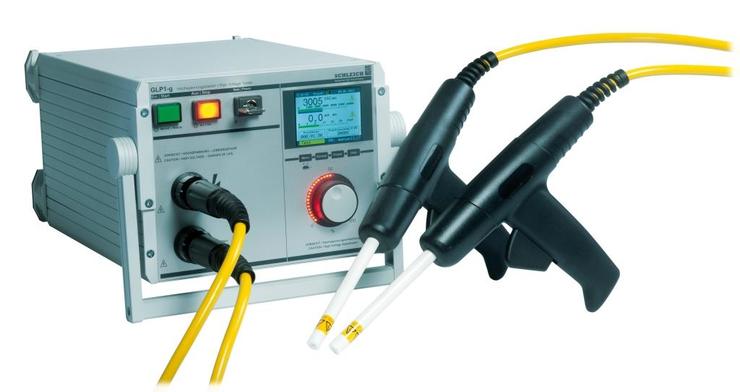
easy to read colour screen
innovative handy data entry via an illuminated rotary button
structured menu with practical functional buttons
multilingual user software
large storage capacity for subsequent data transfer
PE resistance test in four-wire-technology
insulation resistance test
high-voltage test incl. burning function
illuminated ring around the rotary button to shows the high-voltage level
residual voltage test
self-test via black box according to VDE regulations
electronic PE test current control
PE test with resistance or voltage drop display
electronic high-voltage setting
high-voltage with ramp up/down time
three HV modes: manual, automatic with time lapse and burning
worldwide voltage supply 110V…250V / 47…63Hz
test start upon touching the test object with the PE test probe
acoustical and visual status messages
password protection
digital I/O interface and analog actual value outputs for connection to other devices
interfaces for printer, remote control or result query
integration into production lines with PLC / PC remote control
two-circuit safety inputs
safety circuits with restraint-guided safety relays
PrintCom-software to save and print test results on a PC
designs options: tabletop unit, box unit, mobile caddy, 19”-installation
can be fully configured and optimised for specific OEM requirements

Two versions available depending on connection
|
Version 1
|
Version 2
|
The PE and insulation resistance tests are first performed
by means of a test probe with an integrated control unit.
Next the high voltage test is performed with two safety
test pistols.
This test can be actuated by a foot pedal or via a control
unit integrated into the test pistol. various cable lengths
or the test pistols are available
|
The test object is connected to the central earth point.
All three tests can be performed against this single
ground point with the same test pistol.
By activating the selection switches on the hand held
control panel, the test methods can be switched over.
A test pistol with a pressure dependent start button is used.
To start the teat the test tip has to be pressed agianst the test object
|




